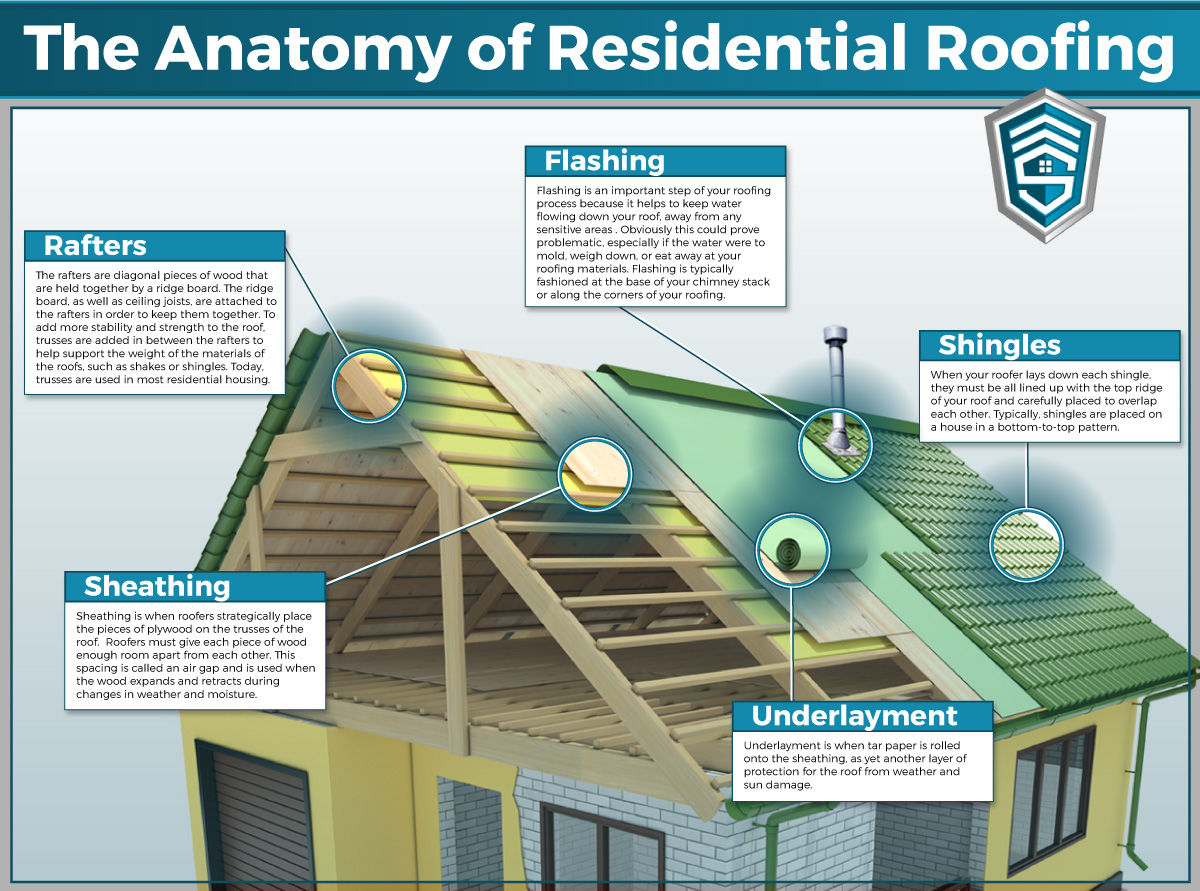Falling Short To Deal With Roof Covering Air Flow Might Trigger Substantial Damage; Check Out The Crucial Factors That Contribute To An Effective Setup And Protect Your Financial Dedication.
Falling Short To Deal With Roof Covering Air Flow Might Trigger Substantial Damage; Check Out The Crucial Factors That Contribute To An Effective Setup And Protect Your Financial Dedication.
Blog Article
Web Content Written By-Conway copyright
When you're taking on a roof covering project, you may not think much concerning roofing ventilation, yet it's more vital than you realize. Reliable air flow aids regulate temperature and moisture in your attic room, protecting against problems like mold and mildew and structural damage. By recognizing exactly how to design and install a well balanced ventilation system, you can enhance power performance and extend the life-span of your roof covering materials. So, what are the essential elements to take into consideration during installation that can make all the difference?
Significance of Roofing System Air Flow
Roofing system ventilation plays an important role in keeping the total wellness of your home. By enabling fresh air to circulate via your attic room, it helps control temperature level and dampness levels. This balance is essential to avoid heat accumulation throughout warm months, which can cause increased energy prices as your air conditioning works overtime.
Furthermore, proper ventilation considerably minimizes the threat of moisture-related concerns like mold and mold. If humidity degrees increase, your home's architectural honesty can be endangered, causing pricey repair services. You would not wish to handle rotting wood or warped roofing materials, right?
Additionally, click here to read extends the lifespan of your roofing system. When heat and wetness are kept in check, your roofing system can perform ideally, avoiding early wear and tear. This means fewer headaches and expenses down the line.
Just How Roof Ventilation Works
Reliable roofing air flow depends on the natural activity of air to create an equilibrium in between intake and exhaust. When you install vents, you're basically enabling fresh air to enter your attic while allowing warm, stagnant air to get away. This procedure assists control temperature level and moisture levels, preventing concerns like mold and mildew growth and roof damage.
Consumption vents, normally located at the eaves, draw in great air from outdoors. Meanwhile, exhaust vents, located near the ridge of the roofing, allow hot air increase and leave. The distinction in temperature develops a natural air movement, known as the stack impact. As cozy air rises, it creates a vacuum that pulls in cooler air from the lower vents.
To optimize this system, you require to make certain that the intake and exhaust vents are effectively sized and positioned. If the consumption is restricted, you won't accomplish the desired air flow.
Likewise, inadequate exhaust can trap heat and wetness, bring about possible damage.
Trick Installation Factors To Consider
When setting up roof air flow, numerous vital factors to consider can make or damage your system's performance. First, you need to evaluate your roof's design. The pitch, shape, and materials all influence air flow and air flow choice. See to it to select vents that suit your roofing system type and neighborhood climate conditions.
Next, take into consideration the placement of your vents. Preferably, you'll want a balanced system with intake and exhaust vents positioned for optimum airflow. Place intake vents low on the roofing system and exhaust vents near the optimal to encourage an all-natural circulation of air. This configuration aids stop moisture build-up and promotes power performance.
Don't forget insulation. Correct insulation in your attic room prevents warm from leaving and keeps your home comfy. Guarantee that insulation does not block your vents, as this can impede airflow.
Last but not least, consider upkeep. over at this website that are easy to accessibility for cleansing and inspection. Routine maintenance guarantees your system continues to function properly with time.
Conclusion
In conclusion, roofing system air flow is vital for a successful installment. By making certain proper airflow, you can protect against warmth accumulation and wetness concerns that result in pricey damage. When you tactically setting intake and exhaust vents, you improve energy performance and extend the life expectancy of your roof covering. Remember, a well-ventilated roof not just secures your investment however additionally improves your indoor air quality. So, focus on air flow to make sure a durable and economical roof for your home.
